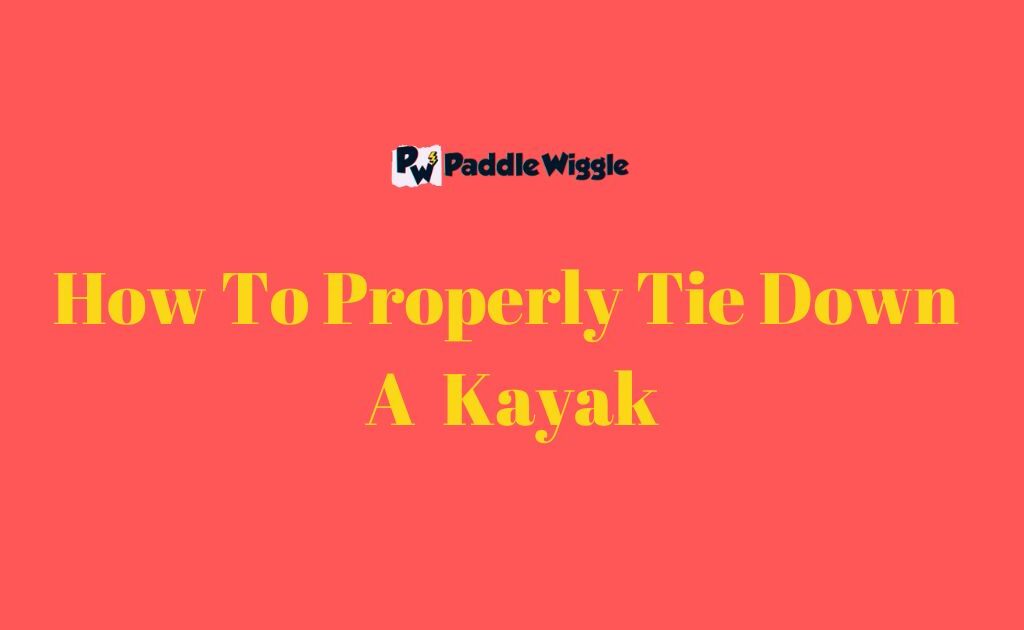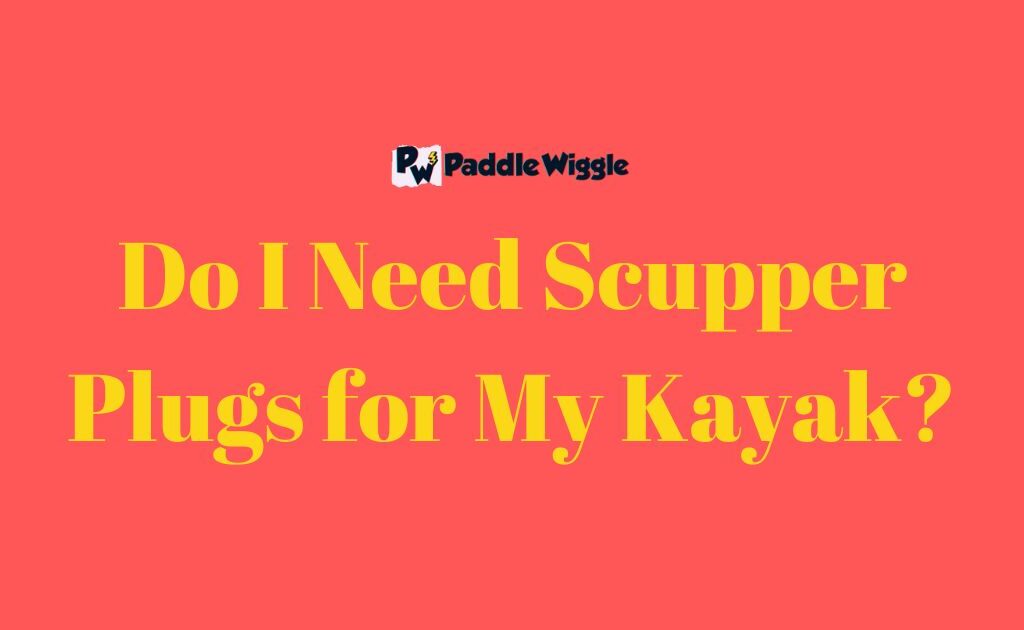Have you ever wondered why do kayaks have holes? Or do scupper holes need to be plugged in? You’re not alone! These crafty vessels come equipped with scupper holes strategically placed throughout their design. But what exactly are these openings, and what purpose do they serve?
Scupper holes are small openings on the kayak’s hull, typically near the seat or bow. They help the kayak stay dry by letting water drain out when it gets inside.
So, when you’re paddling around in nature, these holes make sure your kayak doesn’t fill up with water like a bathtub. It’s like having a self-bailing system!
But there’s more to it than just drainage. The science behind scupper holes goes deeper. These cleverly designed openings help maintain stability by allowing water to flow through the kayak’s hull. Typically, a sit-on kayak has 6 to 8 holes.
By lowering the center of gravity, scupper holes enhance stability, providing a more secure ride on the water. This means that even if you encounter stones or leaves floating in the water, they won’t disrupt your balance.
Now that we’ve unraveled the mystery behind kayak holes, let’s dive into how these scupper holes work their magic!
Contents


Which Type Of Kayaks Have Scupper Holes?
Not every type of kayak has scupper holes. So, which type of kayaks have scupper holes? Scupper holes are mostly found in sit-on-top kayaks. These kayaks have an open-top design, meaning the paddler sits on the kayak rather than inside a closed space. Since they are open, they can take on water from waves or splashes more easily.
To solve this problem, sit-on-top kayaks have scupper holes placed in different parts of the kayak’s bottom. These holes allow water that splashes inside to drain out quickly so the kayak doesn’t get too full of water. This helps the kayak stay afloat and steady.
On the other hand, traditional sit-inside kayaks usually don’t have scupper holes because they are enclosed with a cockpit cover. Instead, they use a cockpit rim and a spray skirt to keep water out, giving the paddler a drier experience while paddling.
The Science Behind Scupper Holes In A Kayak
Scupper holes may sound like a fancy term, but the science behind them is quite straightforward and practical. Let’s explore what scupper holes do actually, and why they matter.
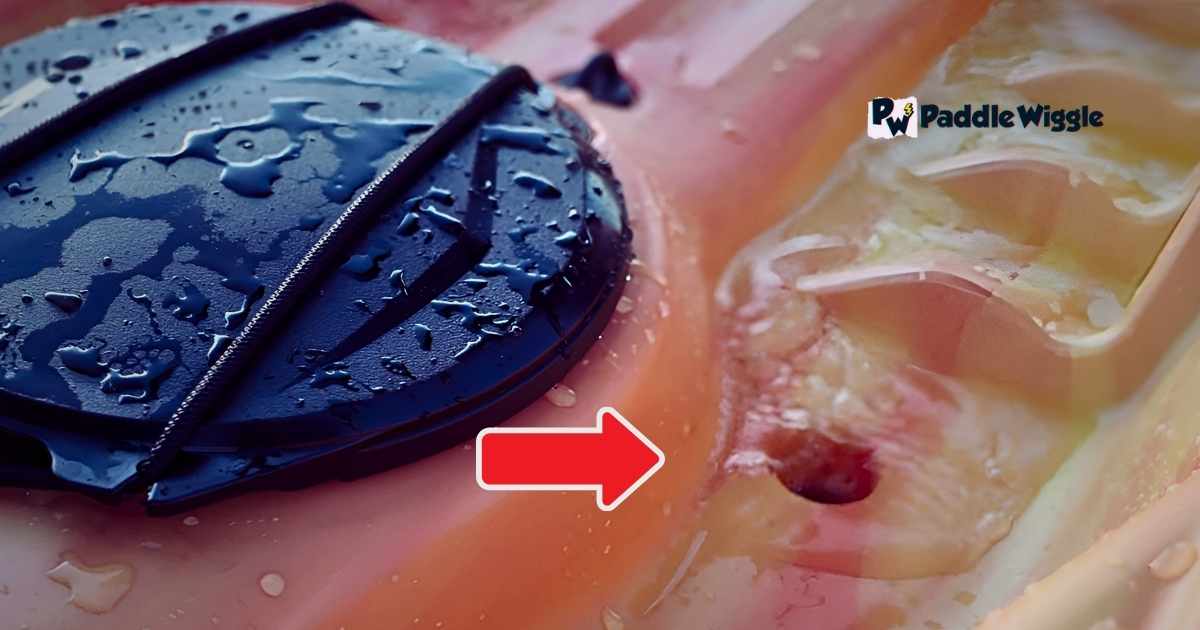

Scupper holes are small openings or drains found in some kayaks, especially in sit-on-top kayaks. These holes are designed to let the water that gets inside the kayak drain out quickly and efficiently.
Imagine you’re paddling on a beautiful lake, and a wave splashes into your kayak, or you accidentally spill some water while fishing – that water needs to go somewhere, right? That’s where scupper holes come into play!
The main idea behind scupper holes is to prevent the kayak from getting filled with water, which could make it heavy, unstable, or even cause it to tip over. By having these holes in the kayak’s hull, any water that finds its way inside can escape through them, keeping your kayak dry and safe.
But why do we need scupper holes specifically in sit-on-top kayaks? Sit-on-top kayaks have an open-top design, meaning you sit on the kayak rather than inside a closed cockpit. This open design is great for easy entry and exit, and you don’t feel cramped.
However, it also means that water can easily splash in, especially if the water is rough or you’re having fun in the waves.
The science behind scupper holes is simple. These holes are below the waterline when the kayak is in the water. As water splashes or flows into the kayak, it naturally fills the hull, but thanks to the scupper holes, it can flow right back out again, like a leak in a bucket. This self-draining process keeps the kayak from becoming a bathtub!
Why Do Scupper Holes Matter?
Now, why do scupper holes matter? They matter a lot for a couple of reasons:
Efficient Water Removal Through Strategically Placed Scupper
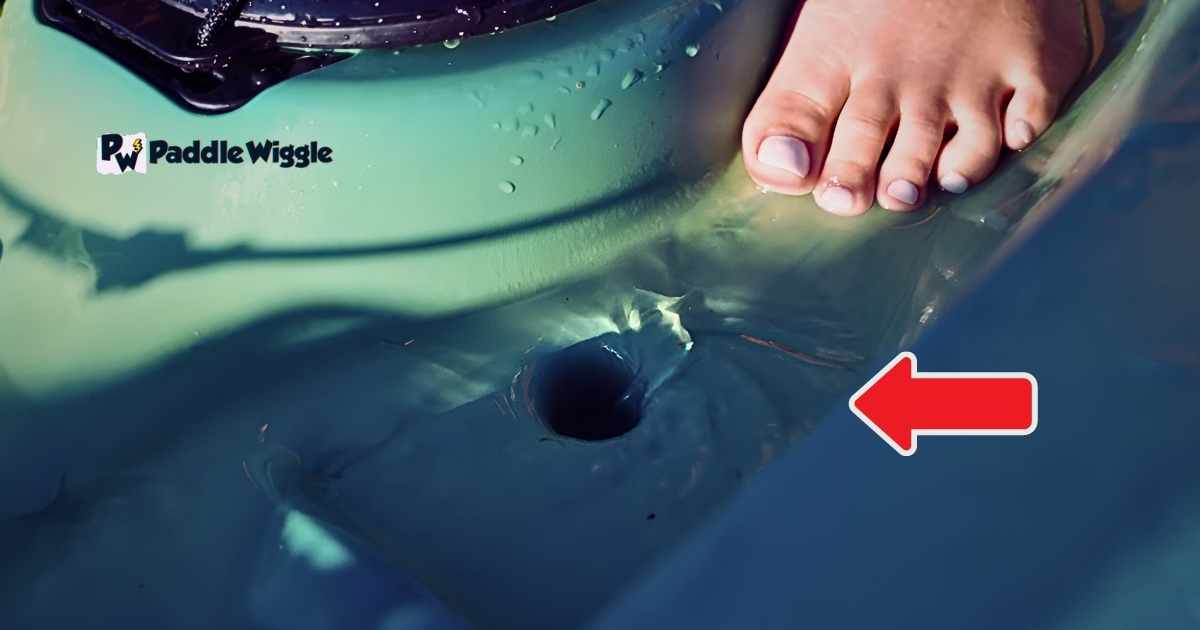

Holes One of the primary reasons for having scupper holes in a kayak is to allow for effective drainage. When you’re out on the water, waves, rain, or even splashes from paddling can result in water accumulating inside the kayak. Without proper drainage, this water could make your kayak heavy and unstable.
To prevent this, manufacturers strategically place scupper holes at specific locations on the hull. These openings allow accumulated water to flow naturally, keeping your kayak dry and buoyant. By ensuring efficient water removal, scupper holes help maintain stability and improve overall performance.
Better Balance And Control
Imagine if all the water splashed or seeped into your kayak stayed there. It would create a lot of weight on one side, making your kayak unsteady and wobbly. This imbalance could make it harder to paddle and could even lead to tipping over. Not fun at all!
But with scupper holes in your kayak, the water flows out quickly, so you don’t have that extra weight messing up your balance.
Having scupper holes creates a balanced drainage system. They are usually placed on both sides of your kayak’s hull so water exits from both sides equally.
This keeps your kayak steady and gives you more control to paddle smoothly.
And when you have better balance and control, your kayaking experience becomes more enjoyable. You can easily navigate through waves and rough waters, knowing that your kayak will stay stable and respond to your every move.
Additional Benefits Of Kayak Scupper Holes
Although these small openings aim at draining out water quickly from a kayak, they offer some additional benefits too. Let’s have a look at them:
Enhanced Self-Bailing
Self-bailing is desirable in kayaks, especially when you may encounter heavy waves or paddle in rough conditions. Scupper holes play a crucial role in making self-bailing possible. As water rushes into the kayak, it quickly exits through the scupper holes, keeping the kayak afloat and minimizing its swamped chances.
Safety in Whitewater Kayaking
In whitewater kayaking, where kayakers navigate through turbulent and fast-moving waters, the risk of water splashing into the kayak is higher. Scupper holes provide an added layer of safety by promptly draining water out and reducing the risk of capsizing due to excess water weight.
Understanding Different Types of Scupper Holes and Their Applications
Scupper holes are essential in many kayaks, especially sit-on-top models. These openings serve a crucial purpose by allowing water to drain out of the kayak, preventing it from accumulating and affecting the vessel’s performance.
Several types of scupper holes are available, each with its unique design and application.
Round Scuppers for Efficient Drainage
One commonly seen type of scupper hole is the round variety. These circular openings are typically found in sit-on-top kayaks and offer efficient drainage during paddling. The shape allows water to flow out quickly, ensuring that the kayak remains relatively dry even when encountering waves or splashes. Round scuppers are designed to provide optimal drainage while keeping the interior as dry as possible.
Slotted or Elongated Scuppers for Improved Tracking
The slotted or elongated variety is another type of scupper hole frequently used in kayaks. These openings not only facilitate water drainage but also enhance tracking performance. By incorporating longer, narrow slots instead of circular holes, these scuppers help maintain better control over the kayak’s direction while still effectively draining water.
This design ensures paddlers enjoy improved stability and maneuverability without compromising effective drainage.
Multiple Sizes and Shapes for Optimized Draining
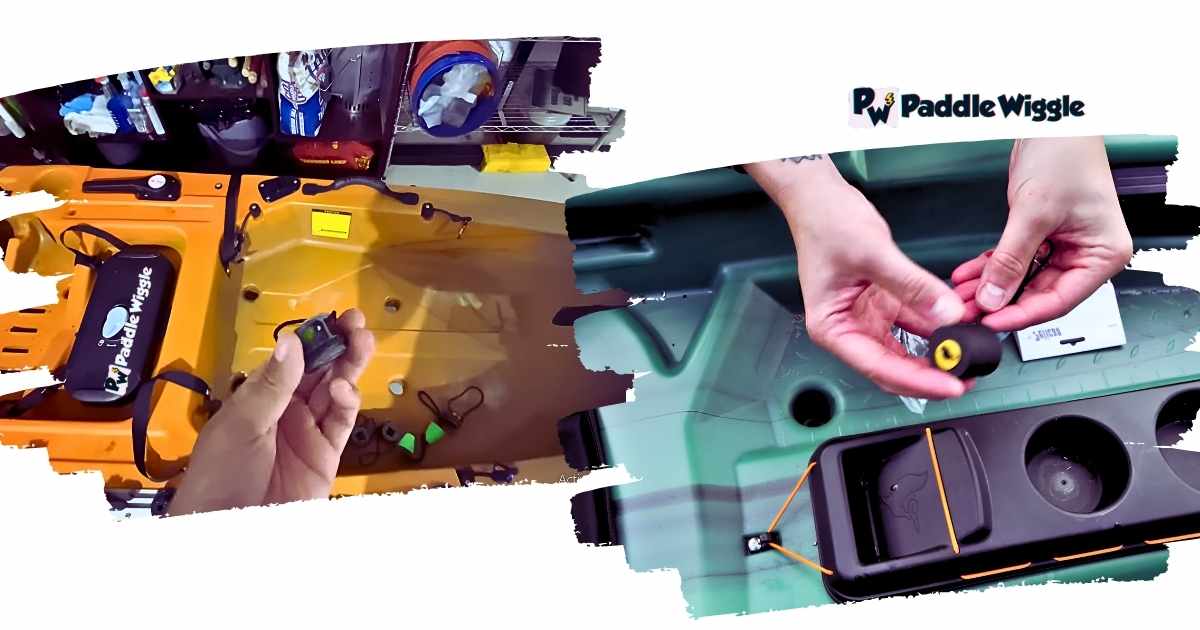

In some kayaks, you may find a combination of different sizes and shapes of scupper holes. Manufacturers understand that various conditions require specific draining options, so they incorporate a variety of scuppers into their designs. This allows paddlers to customize their kayak’s draining capabilities based on factors such as weather conditions or personal preferences.
For instance, a kayak may have larger round scuppers located near areas prone to collecting more water, such as seating areas or footwells. Meanwhile, smaller slotted scuppers might be strategically placed in other sections where tracking performance is crucial. This combination of scupper hole types ensures that the kayak can effectively drain water in various situations, providing paddlers with optimal control and comfort.
Understanding When And How To Use Scupper Plugs
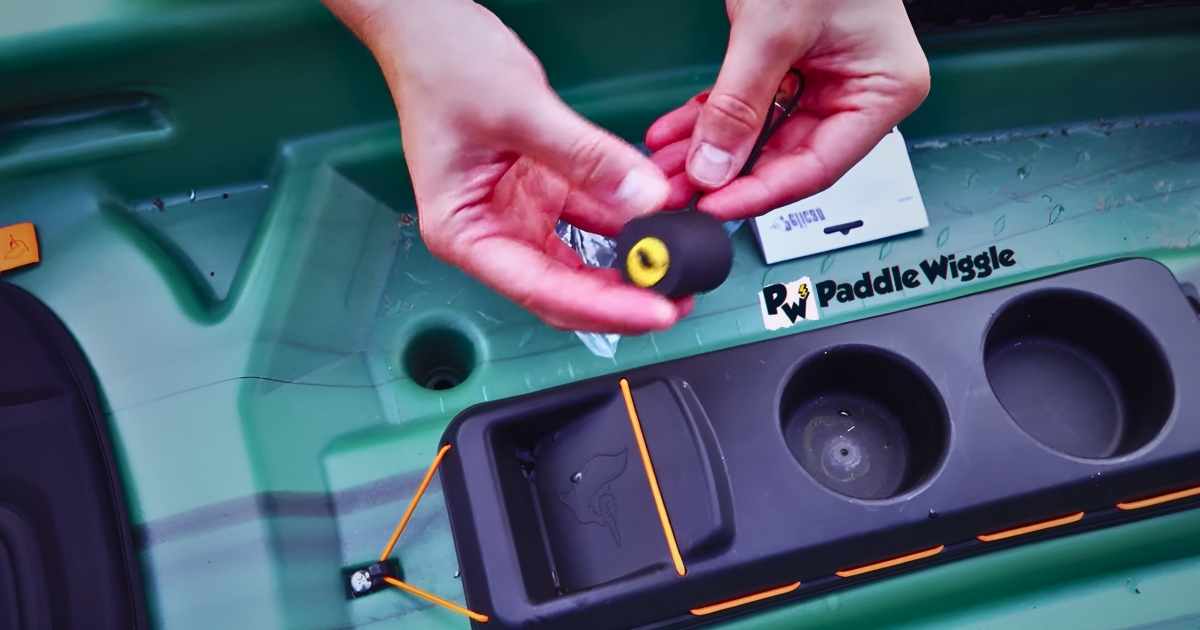

Plugging or unplugging scuppers depends on personal preference, weather conditions, and the type of kayaking activity you are engaged in. While some kayakers prefer to keep their scupper holes open at all times, others find it necessary to plug them in certain situations.
Assessing the amount of water splashing into your kayak is a good starting point to determine whether plugging is necessary. If you notice excessive amounts of water entering your kayak through the scupper holes, consider using scupper plugs. These plugs effectively prevent water from entering through the holes, keeping your kayak drier.
Factors like rough waters, cold temperatures, or carrying heavy loads may also require plugging all or some of your scuppers. In rough waters, waves crashing against your kayak can result in more water splashing inside. Plugging the scuppers helps minimize this issue and keeps you dry throughout your adventure.
Carrying heavy loads can cause kayaks to sit lower in the water than usual, making them more susceptible to taking on water through open scuppers. Plugging these holes helps maintain buoyancy and stability by reducing the amount of water that enters.
Let’s delve into when to plug or unplug them.
Use scupper plugs when you want a drier ride in calm waters too
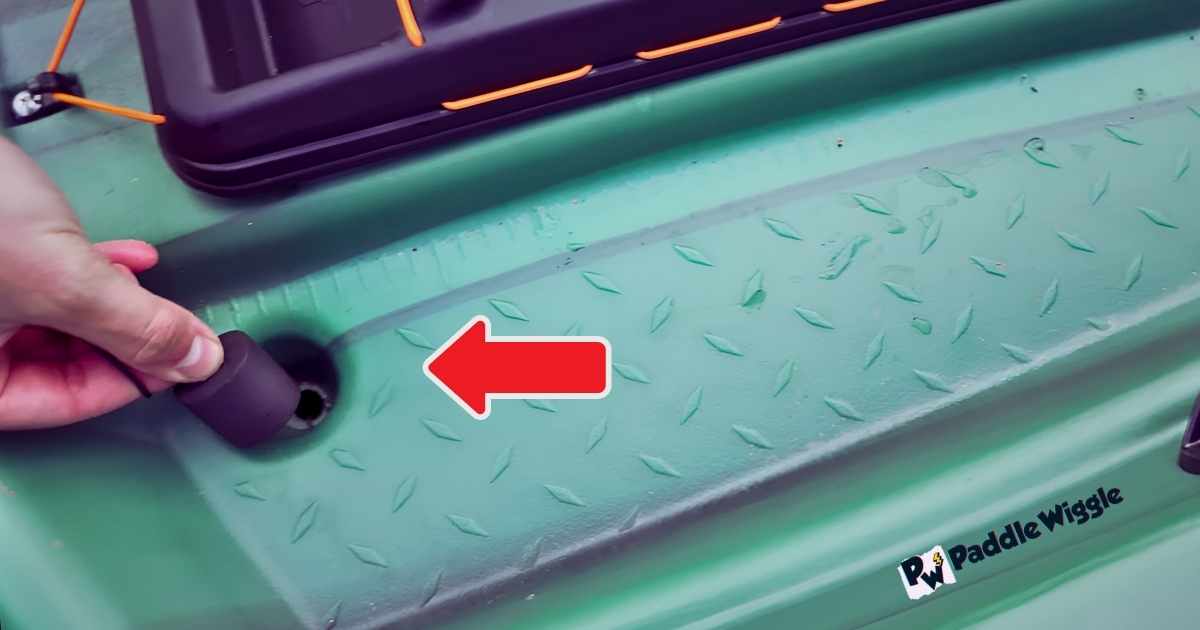

While scupper holes allow water drainage, they can also let water splash back into the kayak during certain conditions. If you prefer a drier experience, inserting scupper plugs is the way to go, even in calmer waters. By blocking the openings with these plugs, you can significantly reduce the amount of water entering your kayak.
Imagine gliding through serene lakes or gently flowing rivers without worrying about getting wet from splashes or minor waves. With scupper plugs securely in place, your kayak stays dry as you navigate tranquil waters, enhancing your overall comfort and enjoyment.
Inserting them securely ensures they won’t come loose while kayaking
To make the most out of using scupper plugs, inserting them securely before setting off on your kayaking adventure is crucial. The last thing you want is for a loose plug to pop out mid-paddle and compromise your dry ride.
Here’s how to ensure a snug fit:
- Identify all the scupper holes on your kayak.
- Match each hole with its corresponding plug size.
- Insert each plug firmly into its respective hole until it fits tightly.
- Give each plug a gentle tug to confirm it’s secure.
Remember that different kayaks may have varying numbers and sizes of scupper holes, so checking your specific model’s design and instructions for proper plug usage is important. By following these steps, you can have peace of mind knowing that your scupper plugs will stay in place throughout your kayaking excursion.
Remove the plugs before launching into rougher conditions
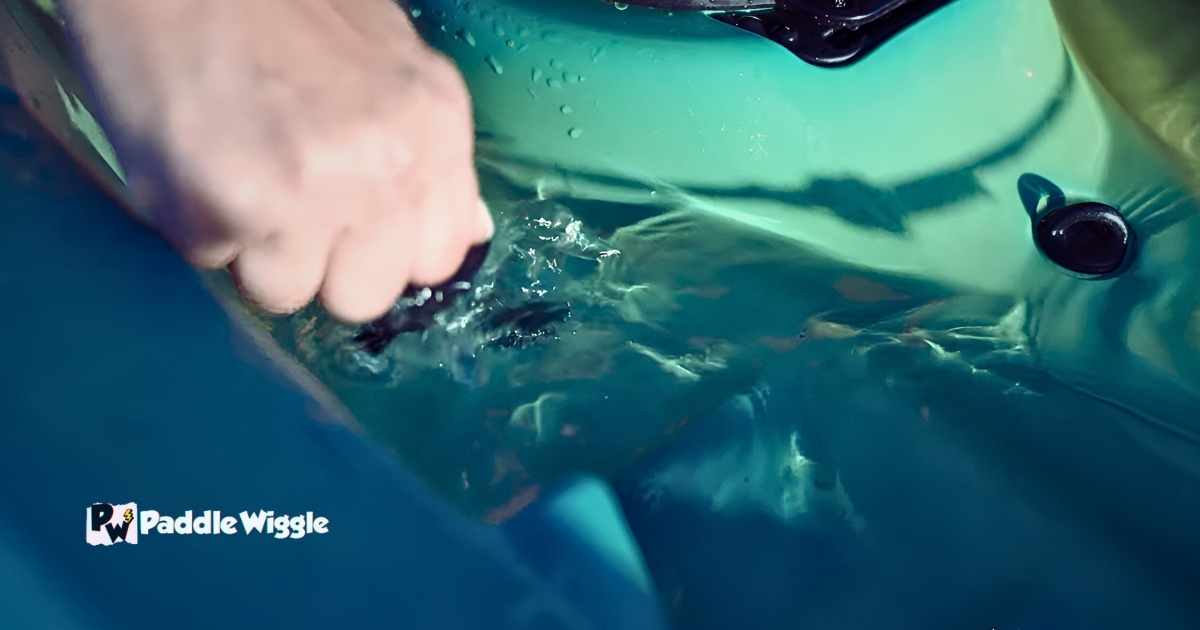

While scupper plugs are beneficial in calm waters, removing them when venturing into rougher conditions is essential. When encountering rapids or choppy waves, water can accumulate in the kayak and create a safety hazard if not allowed to drain properly.
Removing the scupper plugs before tackling more challenging environments enables efficient drainage and prevents swamping. This ensures that any water entering the cockpit can exit through the scupper holes, maintaining stability and minimizing the risk of capsizing.
Remember to keep your scupper plugs easily accessible so you can quickly insert them again once you’ve navigated through rough waters and returned to calmer conditions.
Factors to Consider When Plugging Scupper Holes
Before deciding whether to plug your kayak’s scupper holes, there are several important factors you should take into consideration. Evaluating these factors will help you make an informed decision based on your kayaking adventure’s specific conditions and requirements.
Weather conditions
The first factor to consider is the prevailing weather conditions. Assessing wind speed, wave height, and rain intensity will give you a better understanding of how water might enter your kayak through the scupper holes.
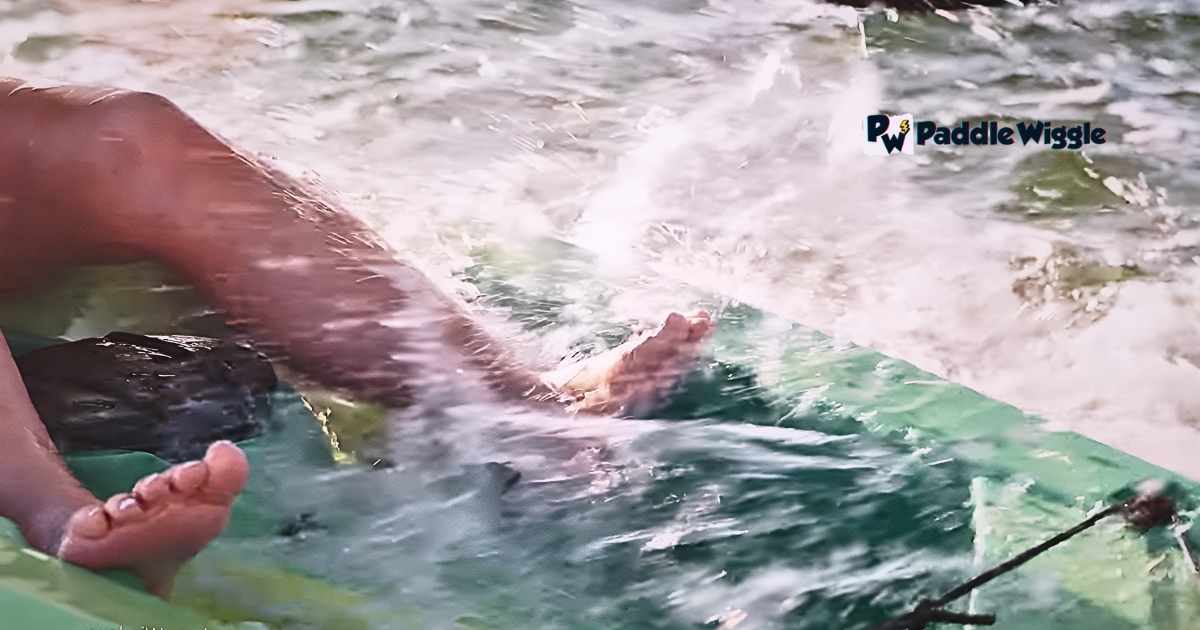

If you’re expecting choppy waters or heavy rainfall, keep the scuppers unplugged to allow for proper drainage.
On the other hand, if the weather is calm and dry, plugging the holes can help prevent water from entering unnecessarily.
Type of Water
Consider the type of water you’ll be navigating in your kayak. Different bodies of water present varying challenges and require different approaches. For instance:
- Calm Lakes: In tranquil lake settings with minimal waves or currents, leaving the scuppers unplugged allows any water that does enter to drain out easily.
- Rivers with Rapids: When paddling in rivers with rapids or fast-flowing sections, plugging the scupper holes can help minimize water intake and maintain stability.
- Open Ocean: Kayaking in open ocean waters often involves dealing with larger waves and stronger currents. In such conditions, it may be beneficial to unplug the scuppers as they provide an effective way for excess water to drain out quickly.
Weight Capacity and Stability
Your kayak’s weight capacity and stability play a crucial role in determining whether or not you should plug your scupper holes. Each kayak has a recommended load capacity specified by its manufacturer.
Plugging all or some of the scuppers can affect how much weight your vessel can safely handle. If you’re carrying heavy gear or planning to bring along a significant amount of extra weight, it’s essential to consider the impact on stability and adjust accordingly.
Fit and Size
When deciding whether to plug your scupper holes, you must ensure that the plugs you use fit properly. Ill-fitting plugs may not provide an effective seal, leading to water leakage into the kayak. Consider the size of the scupper holes themselves.
Larger holes may allow more water to enter, especially in rough conditions. Plugging these larger holes can help maintain a drier interior.
Material and Area
The material your kayak is made from can also influence your decision regarding scupper hole plugging. Some materials are more prone to water absorption than others. For example, kayaks made from rotomolded plastic tend to have higher buoyancy due to trapped air pockets within the material itself. In such cases, leaving the scuppers unplugged can allow any water that enters the kayak to drain naturally without affecting its performance.
Considering the area where you plan to place your plugs is also crucial. Plugs should be positioned securely in each scupper hole so that they don’t dislodge during your kayaking adventure.
3 Tips For Using Scupper Plugs Effectively
Scupper plugs are not a hindrance but rather a valuable accessory for kayakers. They enhance safety, prevent water ingress, and allow controlled drainage when necessary.
Here are some tips for using scupper plugs effectively:
Ensure a snug fit for scupper plugs to prevent dislodging while paddling
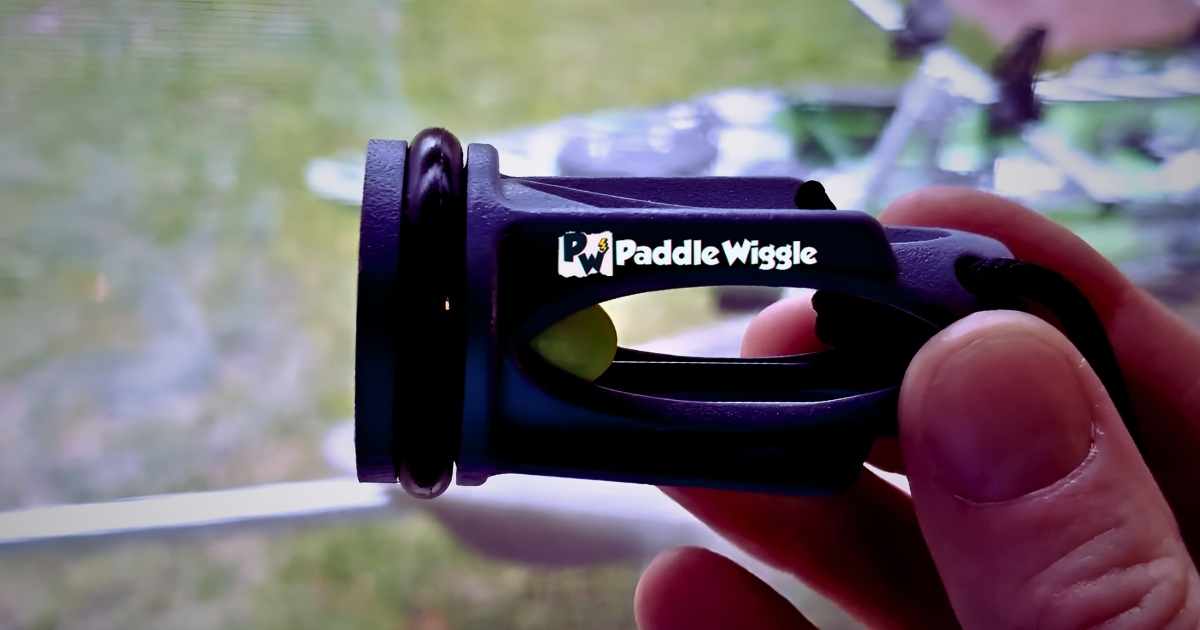

One of the most important things to remember is to ensure the scupper plugs fit tightly. Scupper plugs are meant to seal the holes in your kayak, so water can’t get in. But if they don’t fit well or come loose, water might still get inside while you paddle.
To ensure a secure fit, start by checking the size and shape of your scupper holes. Different kayaks may have slightly different hole sizes, so getting plugs that match your kayak’s holes is essential. Once you have the right plugs, gently push them into each scupper hole until they sit firmly in place.
Experiment with scupper combinations for best kayaking conditions
Every kayaker is different; what works best depends on the weather, water type, and comfort. That’s why trying different combinations of plugged and unplugged scuppers is essential to see what suits you best.
You might leave some scuppers unplugged for calm weather or still waters for better drainage. But if you expect rougher waters or bad weather, plug all the scuppers tightly to keep water out.
It might take a bit of trying to figure out what works for you, but consider factors like stability, maneuverability, and comfort when deciding which setup is best for your kayaking trips. With the right scupper plugs and configurations, you’ll have a drier and more enjoyable time on the water!
Regularly inspect and clean scuppers and plugs for optimal performance
Over time, stuff like sand, dirt, or small rocks can get stuck in your scupper holes and plugs. This can stop them from working correctly. So, regularly checking and cleaning your scuppers is a good idea.
You can gently scrub away any dirt or grime with a soft brush or cloth. Pay extra attention to the area around each plug hole, as debris tends to collect there. Also, clean your scuppers after each kayaking trip by rinsing them with fresh water. This helps keep your scuppers and plugs working well to keep your kayak dry.
Learn More
Do I Need To Use Scupper Plugs In My Kayak?
The decision to use scupper plugs depends on several factors, such as weather conditions, personal preference, and type of kayaking activity. Assess these factors before deciding whether or not to use scupper plugs.
Will Plugged Scuppers Cause My Kayak To Flood If Capsized?
Modern kayaks are designed with buoyancy in mind, so plugged or unplugged scuppers will not significantly affect self-rescue capabilities. Properly plugged scuppers should not cause flooding if capsized.
How Do I Ensure That The Scupper Plugs Fit Securely?
To ensure a snug fit for your scupper plugs, check their compatibility with your kayak’s specific model and dimensions. Regularly inspect them for wear and tear to maintain their effectiveness.
Final Words
To sum up, scupper holes are a fantastic feature in kayaks, especially in sit-on-top kayaks. They help keep the kayak dry and stable by letting water drain out quickly. This is particularly important for sit-on-top kayakers because these kayaks have open tops, and water can splash in easily.
The science behind scupper holes is simple. When water gets inside the kayak, it can flow out through these holes, like a leak in a bucket. This keeps the kayak light and well-balanced, making it easier to paddle and feel confident even in rough waters.

